History was made by 43 KIDS’ memorizing and chanting 700 verses of Bhagavad Gita
History was made by 43 KIDS’ memorizing and chanting 700 verses of Bhagavad Gita with the Divine Blessing of Sri Ganapathy Sachchidananda Swamiji
Part 1
 “I owed a magnificent day to the Bhagavad-Gita. It was the first of books; it was as if an empire spoke to us, nothing small or unworthy, but large, serene, consistent, the voice of an old intelligence, which in another age and climate, had pondered and thus disposed of the same questions that exercise us.” — Ralph Waldo Emerson, American philosopher and poet
“I owed a magnificent day to the Bhagavad-Gita. It was the first of books; it was as if an empire spoke to us, nothing small or unworthy, but large, serene, consistent, the voice of an old intelligence, which in another age and climate, had pondered and thus disposed of the same questions that exercise us.” — Ralph Waldo Emerson, American philosopher and poet
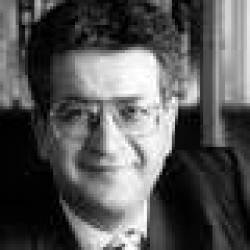 “Sanskrit …. is extremely elaborate, almost artificial, and is capable of describing multiple levels of meditation, states of consciousness and psychic, spiritual and even intellectual processes. As for vocabulary, its richness is considerable and highly diversified. Sanskrit has for centuries lent itself admirably to the diverse rules of prosody and versification. Thus we can see why poetry has played such a preponderant role in all of Indian culture and Sanskrit literature.”Georges Ifrah, French historian of Mathematics
“Sanskrit …. is extremely elaborate, almost artificial, and is capable of describing multiple levels of meditation, states of consciousness and psychic, spiritual and even intellectual processes. As for vocabulary, its richness is considerable and highly diversified. Sanskrit has for centuries lent itself admirably to the diverse rules of prosody and versification. Thus we can see why poetry has played such a preponderant role in all of Indian culture and Sanskrit literature.”Georges Ifrah, French historian of Mathematics
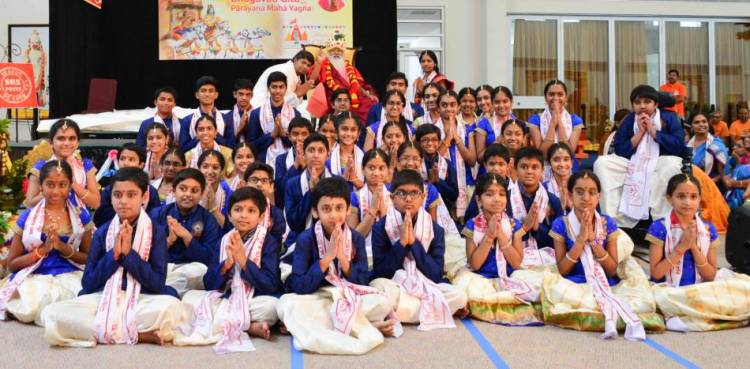
In August 2015, Sri Ganapathy Sachchidananda Swamiji commanded the Children and youth, who were sitting in a newly inaugurated Karya Siddhi Hanuman Temple in Frisco, Texas USA to memorize the entire Bhagavad Gita that contains 700 verses and chant them by the time He comes the next year. Many children with so much enthusiasm, gusto and determination agreed by saying “Yes, Appaji,” “Yes, Tataji,” and “Yes, Swamiji.” With that announcement history was in the making. 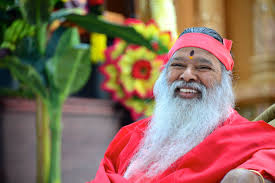 Sri Swamiji asked Srikanth Challa to take the responsibility. The arduous, laborious, grueling and the very difficult task of memorizing the Bhagavad Gita verse by verse started. Parents and children went through the hard task of adjusting their time, foregoing their holidays, working around their school schedules, sacrificing their leisure time, and postponing their travels to make sure that the children will attend the Gita classes on a regular basis. They all realized that it would be hard to catch up with the memorization even if they miss one class. Parents and children spent countless number of hours memorizing to make sure that they will be ready to chant all 700 verses by the time Sri Swamiji arrives in July 2016.
Sri Swamiji asked Srikanth Challa to take the responsibility. The arduous, laborious, grueling and the very difficult task of memorizing the Bhagavad Gita verse by verse started. Parents and children went through the hard task of adjusting their time, foregoing their holidays, working around their school schedules, sacrificing their leisure time, and postponing their travels to make sure that the children will attend the Gita classes on a regular basis. They all realized that it would be hard to catch up with the memorization even if they miss one class. Parents and children spent countless number of hours memorizing to make sure that they will be ready to chant all 700 verses by the time Sri Swamiji arrives in July 2016.
History was made on July 17, 2016 with 43 children ages 6 thru 14 sitting for about four hours chanting all 700 verses of Bhagavad Gita with Sri Swamiji sitting next to them admiring and appreciating the discipline, dedication and devotion of the children. More than 4000 people along with special invited guests for this historical event listened with awe, amazement, excitement and astonishment. The sounds, rhythm, energy, and vibrations created by chanting touched the audience, infused them with vigor, infiltrated their body, touched their hearts and penetrated their soul. By the time they completed chanting, a number of people shed tears in appreciating the commitment, dedication and discipline of the children. Some of them have seen even Sri Swamiji wiping His tears. Many of them became speechless and left numbed cherishing the unprecedented historical event. Sri Swamiji’s power and blessings permeated the majestic Temple and cleansed the hearts of the people and purified the atmosphere.
Why Memorize?
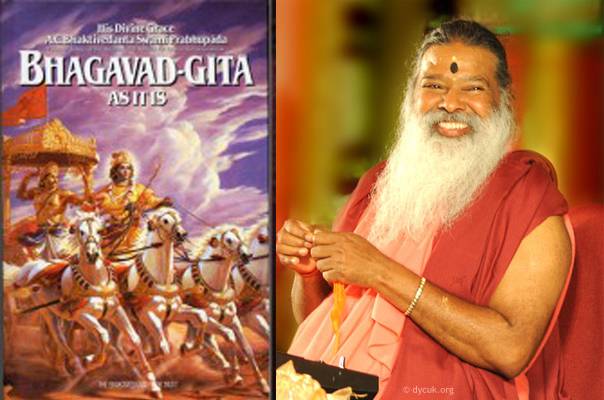 Why did Sri Swamiji say that the children should memorize and chant? Are there any benefits of chanting that may help children as they grow up? Memorization of information based on repetition is as old as human history. It served the purpose of preserving the cultures and helped develop the individual personalities. In every society we find children learning the alphabets of their mother tongue and other languages. Similarly, if we look at all school going children, they will be learning the multiplication of the tables and the spelling of the words. As they move up to middle school and high schools, they will be memorizing a number of mathematical formulas, algorithms, chemical numbers, poetry and historical dates. At the high school level, the elements and their chemical numbers must be memorized by rote. Many times, teachers use rote learning without even realizing they do so.
Why did Sri Swamiji say that the children should memorize and chant? Are there any benefits of chanting that may help children as they grow up? Memorization of information based on repetition is as old as human history. It served the purpose of preserving the cultures and helped develop the individual personalities. In every society we find children learning the alphabets of their mother tongue and other languages. Similarly, if we look at all school going children, they will be learning the multiplication of the tables and the spelling of the words. As they move up to middle school and high schools, they will be memorizing a number of mathematical formulas, algorithms, chemical numbers, poetry and historical dates. At the high school level, the elements and their chemical numbers must be memorized by rote. Many times, teachers use rote learning without even realizing they do so.
In the early stages of civilization and even before writing on palm leaves started, the vast reserves of material is passed on orally from one generation to another. It has become an end itself. The information acquired by rote learning cannot be stripped from the learner, it is always with him, and travels along with him allowing him to tap the knowledge at will. At an early age they may not know the meaning of the scriptures the learn by heart, but they will slowly absorb, digest and dissect the meaning of the scriptures they memorized. Vyaas Houston says, “Learning in his tradition is a yajna, an act of offering rather than possessing. Tapping into an unlimited memory is a constant and wondrous process of discovery that is without doubt unique to every individual.”
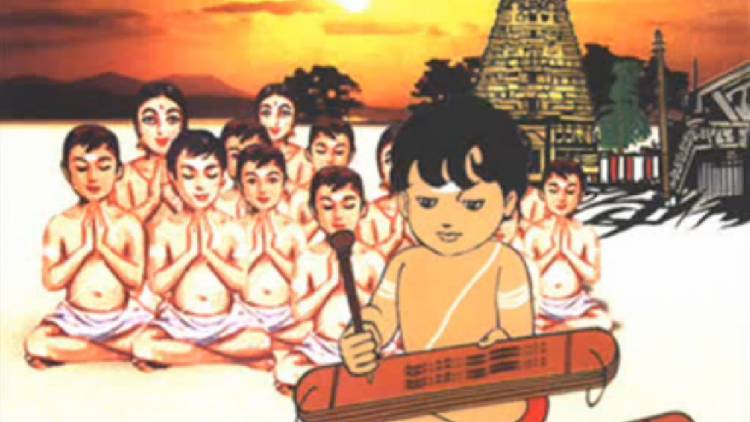 Memorization will allow us to absorb the information that can be stored and retrieved at one’s will. Memorization will help you to learn the elusive phrases at early age that defy one to learn after certain age; permit you to hammer every word for precise pronunciation; make you twist your tongue for proper clarity and crispness; and save so much time that could have been wasted by repeatedly looking for the same information, and infuse confidence in knowing that he can retrieve the information from the memory bank.
Memorization will allow us to absorb the information that can be stored and retrieved at one’s will. Memorization will help you to learn the elusive phrases at early age that defy one to learn after certain age; permit you to hammer every word for precise pronunciation; make you twist your tongue for proper clarity and crispness; and save so much time that could have been wasted by repeatedly looking for the same information, and infuse confidence in knowing that he can retrieve the information from the memory bank.
As we memorize the sloka and chant the slokas, they keep reverberating in our mind, instilling energy, minimizing the evil tendencies and accumulating the dharmic virtues. One would enjoy repeating the mantras as he gets more pleasure and happiness. One can chant these mantras during the whole day before getting down from the bed, while cooking food, eating food, going to school, before the exam time, before going to bed and so on to avert any potential problems. They will help us to stop worrying and keep remembering the essence of the mantras directed toward a specific deity. It becomes addictive and you can’t stop it.
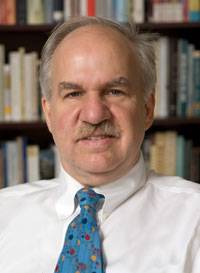 According to Brad Leithauser, “The best argument for verse memorization may be that it provides us with knowledge of a qualitatively and physiologically different variety: you take the poem inside you, into your brain chemistry if not your blood, and you know it at a deeper, bodily level than if you simply read it off a screen.” Catherine Robson puts the point succinctly: “If we do not learn by heart, the heart does not feel the rhythms of poetry as echoes or variations of its own insistent beat.”
According to Brad Leithauser, “The best argument for verse memorization may be that it provides us with knowledge of a qualitatively and physiologically different variety: you take the poem inside you, into your brain chemistry if not your blood, and you know it at a deeper, bodily level than if you simply read it off a screen.” Catherine Robson puts the point succinctly: “If we do not learn by heart, the heart does not feel the rhythms of poetry as echoes or variations of its own insistent beat.”
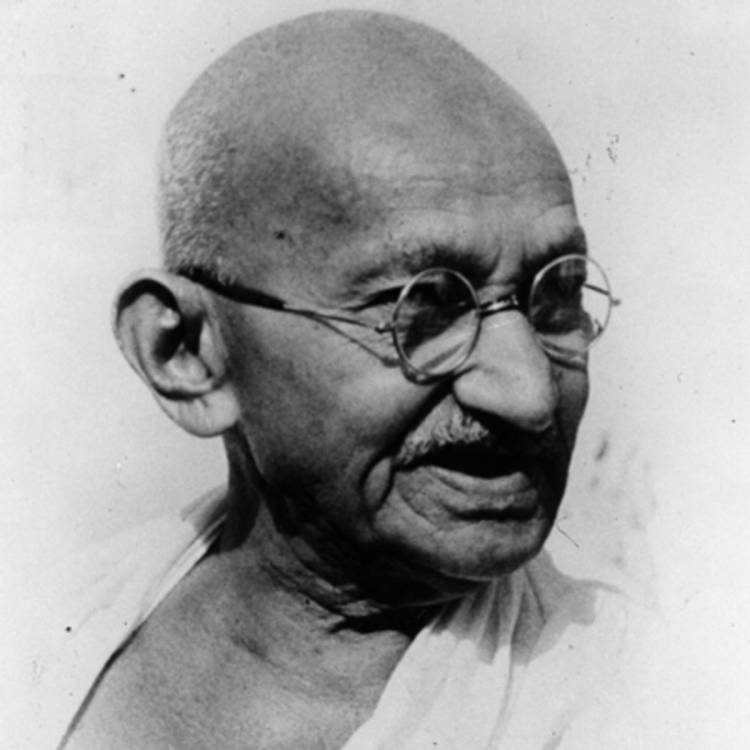 Mahatma Gandhi says it is important to understand the meaning and chanting the purpose of chanting of a mantra. “There is a definite advantage in memorizing these scriptures. It will stay with us all the time even when our faculties may get impaired. It will prove to be a guiding light during moments of despair and distress. One cannot imagine of any other source more reliable than Gita during such disasters.”
Mahatma Gandhi says it is important to understand the meaning and chanting the purpose of chanting of a mantra. “There is a definite advantage in memorizing these scriptures. It will stay with us all the time even when our faculties may get impaired. It will prove to be a guiding light during moments of despair and distress. One cannot imagine of any other source more reliable than Gita during such disasters.”
Why Children?
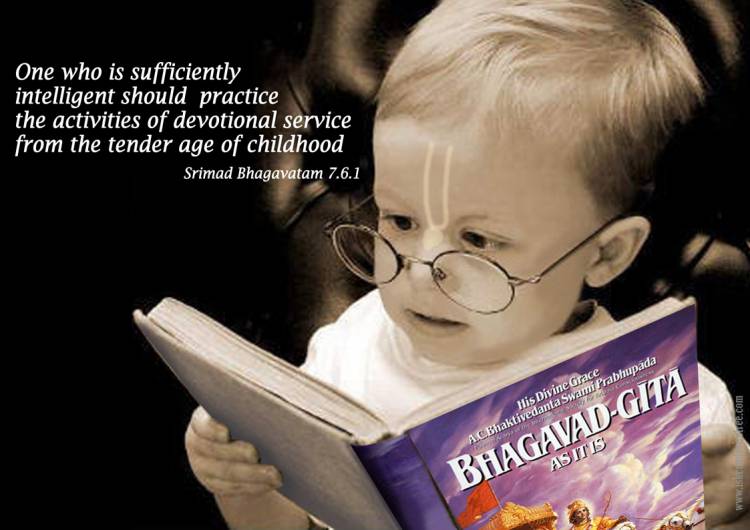 Why did Sri Swamiji encourage children to learn Bhagavad Gita? Do they learn faster and better than adults? Do they absorb and digest better than adults? Do they retain more information than adults?
Why did Sri Swamiji encourage children to learn Bhagavad Gita? Do they learn faster and better than adults? Do they absorb and digest better than adults? Do they retain more information than adults?
According to science, a brain contains about 100 billion brain cells called neurons. This number remains the same irrespective of the age and would not actually change very much at all from birth to death. Then the question is how do the children learn faster and remember better than adults. The main difference between children and adults is found only in the number of connections among the neurons. As we grow, the connectivity to each of the neurons changes a lot. The number of connections change as we learn new things and have different experiences.
There is a common adage that children’s brain can absorb and soak up information like a sponge. Is there any scientific evidence to prove it? Scientists reveal that there is a fundamental difference between the learning processes between children and adults known as synaptogenesis andsynapse elimination or pruning, respectively.
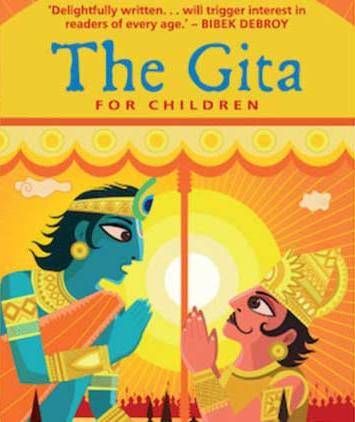 Children have more neurons start establishing more and more connections with other neurons as they start learning. Every sound they hear, every sensation the experience, every movement they make, and every stimulation they are prodded to are all stored in the brain. These neural connections cause the brain to learn anything and everything as the brain is developing at a faster rate with very little effort. This learning process is known as synaptogenesis.
Children have more neurons start establishing more and more connections with other neurons as they start learning. Every sound they hear, every sensation the experience, every movement they make, and every stimulation they are prodded to are all stored in the brain. These neural connections cause the brain to learn anything and everything as the brain is developing at a faster rate with very little effort. This learning process is known as synaptogenesis.
Among adults, the learning process is different. Brain starts to discriminate and try to specialize the areas that need to be stored. At this stage, brain collects lot of useful as well as useless information by spending more energy. Instead of overloading the energy, adults use their brain to eliminate the pathways/ neural connections to reduce the overload. An effort will be made as to what is useful and relevant based on special interest and start eliminating or pruning the information instead of storing everything that comes to the brain. This process is called synapse elimination or pruning.
Most of the experts who are concerned about children’s brain and their education believe that children have the ability to connect their neurons with other neurons compared to adults. As a result, they can learn much more easily than adult can do. Thus, it is advised that it is better for parent or teacher to expose their children to lots of different stimulations and experiences to allow more and more connections to be formed as often as possible. Some experts also proved that the foreign words are easier to remember in a childhood age than in adult age. Secondly, research also showed that joy, energy and innocence peak between the ages of six and nine years, before children start worrying about how they look, what their friends think and how well they do at school. The Galaxy Research poll of Australian parents found that children are bestowed with boundless energy and enthusiasm, have retained a sense of awe and wonder with the world and remain uninhibited in their behavior at this age. It is the best time for children to learn about many things such as foreign languages or any new material.
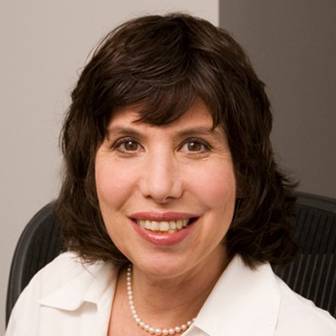 According to Alison Gopnik, children’s “brains are more active and more flexible, with more connections per brain cell, than the brains of adult human beings, the researchers have discovered. By age three, the child's brain is actually twice as active as an adult's. It has some 15,000 synapses or connections per neuron, many more than in the adult brain.” The more you stimulate their brain, the more connections to neurons are established. With more connections, they will think better, learn faster, and draw logical conclusions.
According to Alison Gopnik, children’s “brains are more active and more flexible, with more connections per brain cell, than the brains of adult human beings, the researchers have discovered. By age three, the child's brain is actually twice as active as an adult's. It has some 15,000 synapses or connections per neuron, many more than in the adult brain.” The more you stimulate their brain, the more connections to neurons are established. With more connections, they will think better, learn faster, and draw logical conclusions.
Harold Chugani of Children’s Hospital of Michigan conducted research to find out the process of learning among children by using PET scans to examine the brain structures and concluded that the brains that were metabolizing the most glucose were the most active. The brain continues to consume glucose at this feverish pitch through age 10 and then slows down until age 16, when it levels off at adult values. He also observed that the child's brain burns much more glucose than an adult's brain because it must maintain trillions of connections between neurons, more than twice as many as are ultimately retained.
Researchers also reveal that “If we teach our children early enough, it will affect the organization or 'wiring,' of their brains." It will stay with them whatever they learn during their formative years even if they discontinue the process. Chugani says, "Once a child has learned an instrument, he or she can stop playing, then pick up the instrument 20 years later and do much better than an adult just starting out."Martha Pierson, a neurobiologist at Baylor College of Medicine, argues that "Children need a flood of information, a banquet, a feast." Early education, she adds, "shapes the basic architecture of the computer (brain). If you are exposed to enough things, you'll develop a processor that can handle the flood of data that life throws at you later."
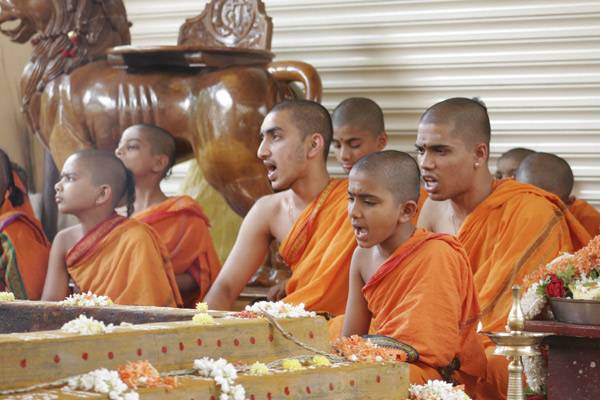 Some people argue that children are better learners. It is believed that the kids are less afraid to take risks having less responsibilities and less vulnerability for mistakes. A child’s environment is a big motivational factor in their learning. They are at school studying many different subjects all day, playing different sports, and taking part in different extra-curricular activities. This child environment contrasts with adults who are usually focused on one subject area and are less open to different learning opportunities in their lives.
Some people argue that children are better learners. It is believed that the kids are less afraid to take risks having less responsibilities and less vulnerability for mistakes. A child’s environment is a big motivational factor in their learning. They are at school studying many different subjects all day, playing different sports, and taking part in different extra-curricular activities. This child environment contrasts with adults who are usually focused on one subject area and are less open to different learning opportunities in their lives.
It is believed that children are more creative, spontaneous and energetic than adults, making them better learners. Adults may be less inclined to be corrected and feel like they have learnt what they need to know in comparison to a learning toddler.
“The human brain is a storehouse of feelings, thought processes and experiences. It receives, stores, processes, generates, visualizes and sets in motion a chain of thoughts, which then gets converted into action. Though an abstract entity, the mind holds the key to superior intelligence and memory. The brain, which is the repository of all thoughts of the past and the present can be trained, honed and motivated to realised its full potential and become a window of the future. The mantras of the Vedas are the secret but powerful agents to improve the mind as the vibrations caused in the brain by the Vedic mantras provide the mind with the most conducive environment for growth.”
Sanskrit: Its Unique features
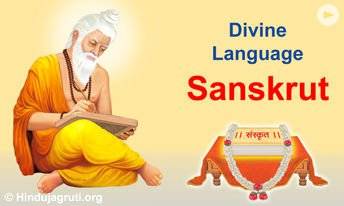 Sanskrit was considered as "Dev Bhasha", " Devavani "or the language of the Gods by ancient Indians. The word samskrit, meaning "refined," “complete”, “perfect,” “definitive,” or "purified," is the antonym of prakriti, meaning "natural," or "vulgar." It is made up of the primordial sounds, and is developed systematically to include the natural progressions of sounds as captured by the human mind. Our ancient rishis were able to capture the natural sounds of panchabhutas such as wind blowing, raining, hissing, roaring, ocean waves, thunder, fire, silence, and bird chirping and translate them into oral language and finally into written language.
Sanskrit was considered as "Dev Bhasha", " Devavani "or the language of the Gods by ancient Indians. The word samskrit, meaning "refined," “complete”, “perfect,” “definitive,” or "purified," is the antonym of prakriti, meaning "natural," or "vulgar." It is made up of the primordial sounds, and is developed systematically to include the natural progressions of sounds as captured by the human mind. Our ancient rishis were able to capture the natural sounds of panchabhutas such as wind blowing, raining, hissing, roaring, ocean waves, thunder, fire, silence, and bird chirping and translate them into oral language and finally into written language.
“Vedic Sanskrit literature developed first in an oral form, and was first set down in writing after centuries of oral transmission. The gap between the composition of and the written recording of the literature makes dating difficult, but most of what survives can be assigned either to the Vedic or Classical period. Although the art of oral transmission in a pre-literate society required exact memorization, scholars cannot confidently say how close what was finally recorded in the third century B.C. is to the original composition.”http://colfa.utsa.edu/drinka/pie/lang_sanskrit.htm
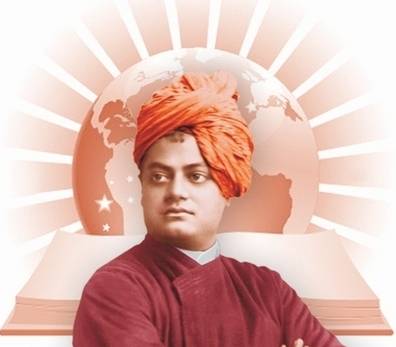 Sanskrit is probably the oldest recorded language in the world. Sanskrit is the most important medium in lending the continuity to Indian civilization for centuries. Sanskrit is a highly adjustable language and has a huge vocabulary with which to render even the most abstract of philosophical, psychological, and scientific concepts. Sanskrit was the language used by ancient Indians in the wide variety of fields such as astronomy, medicine, mathematics, literature, chemistry, algebra, kavya, drama, politics, spiritual, religious scriptures and others. Swami Vivekananda says, “This Sanskrit language is so intricate, the Sanskrit of the Vedas is so ancient, and the Sanskrit philology so perfect, that any amount of discussion can be carried on for ages in regard to the meaning of one word.”
Sanskrit is probably the oldest recorded language in the world. Sanskrit is the most important medium in lending the continuity to Indian civilization for centuries. Sanskrit is a highly adjustable language and has a huge vocabulary with which to render even the most abstract of philosophical, psychological, and scientific concepts. Sanskrit was the language used by ancient Indians in the wide variety of fields such as astronomy, medicine, mathematics, literature, chemistry, algebra, kavya, drama, politics, spiritual, religious scriptures and others. Swami Vivekananda says, “This Sanskrit language is so intricate, the Sanskrit of the Vedas is so ancient, and the Sanskrit philology so perfect, that any amount of discussion can be carried on for ages in regard to the meaning of one word.”
There is also a story to indicate that Sanskrit was first introduced by Brahma to the Sages of the celestial abodes and it is still the language of the celestial abode, so it is also called the Dev Vani.
The phonology (the speech sound) and morphology (the science of word formation) of the Sanskrit language is unique and entirely different from all of the languages of the world. The main feature of Sanskrit is that it contains 16 vowels and 36 consonants. The sounds of these 52 alphabets are fixed and precise since the very beginning. They withstood the time and were never changed, 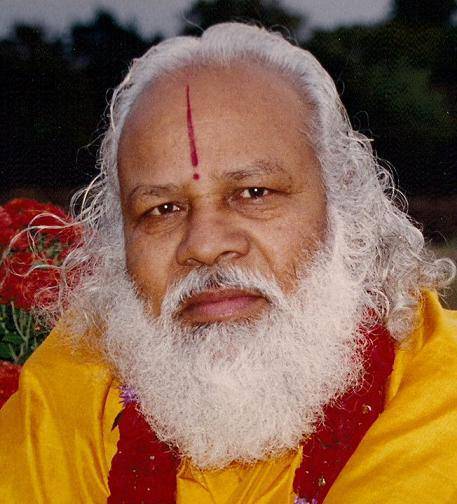 altered, modified, or improved. From times immemorial, the words created by combining the alphabets of the Sanskrit language always had the same pronunciation. “There was no ‘sound shift,’ no change in the vowel system, and no addition was ever made in the grammar of the Sanskrit in relation to the formation of the words. The reason is its absolute perfection by its own nature and formation, because it was the first language of the world.” Swami Prakashananda Saraswati.
altered, modified, or improved. From times immemorial, the words created by combining the alphabets of the Sanskrit language always had the same pronunciation. “There was no ‘sound shift,’ no change in the vowel system, and no addition was ever made in the grammar of the Sanskrit in relation to the formation of the words. The reason is its absolute perfection by its own nature and formation, because it was the first language of the world.” Swami Prakashananda Saraswati.
Sanskrit is considered as a most wonderful language with clarity, accuracy, exactness and precision. Every letter and word has a vibrant sound and should be uttered without any deviation. It should be pronounced properly and meticulously. Even a slight alteration in their pronunciation can spell disaster. Meaning may change to catastrophic results. If these words are spoken properly with deep knowledge, the benefits would be immense and invaluable. Even if we utter these words properly without knowledge, they will create more vibrations since these words are nothing but Mantras. The sounds of its alphabets are such that uttering them even mentally causes resonant vibration within the Chakras of the human subtle body.
 W. C. Taylor, an American Indologist was moved by the richness of Sanskrit language. “It is an astounding discovery that Hinduism possessed, in spite of the changes of realms and changes of time, a language of unrivalled richness and variety …. A philosophy, compared with which, in point of age, the lessons of Pythagoras are but of yesterday, and in point of daring speculation Plato's boldest efforts were tame and commonplace. A poetry more purely intellectual than any of those of which we had before any conception; and systems of science whose antiquity baffled all power of astronomical calculation. This literature, with all its colossal proportions, which can scarcely be described without the semblance of bombast and exaggeration claimed of course a place for itself - it stood alone, and it was able to stand alone.”
W. C. Taylor, an American Indologist was moved by the richness of Sanskrit language. “It is an astounding discovery that Hinduism possessed, in spite of the changes of realms and changes of time, a language of unrivalled richness and variety …. A philosophy, compared with which, in point of age, the lessons of Pythagoras are but of yesterday, and in point of daring speculation Plato's boldest efforts were tame and commonplace. A poetry more purely intellectual than any of those of which we had before any conception; and systems of science whose antiquity baffled all power of astronomical calculation. This literature, with all its colossal proportions, which can scarcely be described without the semblance of bombast and exaggeration claimed of course a place for itself - it stood alone, and it was able to stand alone.”
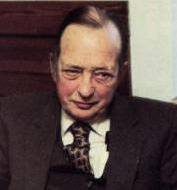 Sanskrit is a marvelous, majestic, scientific and spiritual language. Its depth, fullness, splendor, simplicity and complexity at the same time is peerless. A. L. Basham, former professor of Asian Civilization in the Australian National University, Canberra, writes in his book The Wonder That Was India: "One of ancient India’s greatest achievements is her remarkable alphabet, commencing with the vowels and followed by the consonants, all classified very scientifically according to their mode of production, in sharp contrast to the haphazard and inadequate Roman alphabet, which has developed organically for three millennia. It was only on the discovery of Sanskrit by the West that a science of phonetics arose in Europe."(P:390)
Sanskrit is a marvelous, majestic, scientific and spiritual language. Its depth, fullness, splendor, simplicity and complexity at the same time is peerless. A. L. Basham, former professor of Asian Civilization in the Australian National University, Canberra, writes in his book The Wonder That Was India: "One of ancient India’s greatest achievements is her remarkable alphabet, commencing with the vowels and followed by the consonants, all classified very scientifically according to their mode of production, in sharp contrast to the haphazard and inadequate Roman alphabet, which has developed organically for three millennia. It was only on the discovery of Sanskrit by the West that a science of phonetics arose in Europe."(P:390)
Basham goes on to say "It will be seen that this alphabet is methodical and scientific, its elements classified first into vowels and consonants, and then, within each section, according to the manner in which the sound is formed. The gutturals are formed by the construction of the throat at the back of the tongue, the palatals by pressing the tongue flat against the palate, the retro-flexes by turning up the tip of the tongue to touch the hard palate, the dentals by touching the upper teeth with the tongue, and the labials by pursuing the lips." (p: 509)
Many scholars have recognized that Sanskrit is the mother of many European languages. Similarly, all the Indian local languages came out of the womb of Sanskrit. It spread far and wide across the 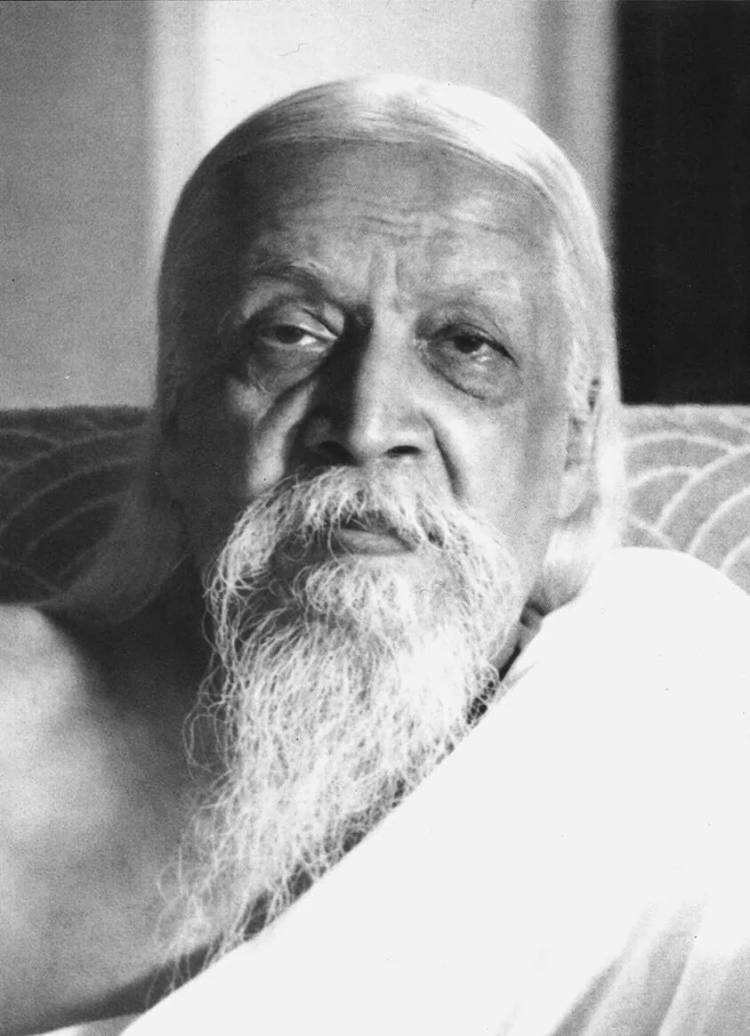 globe and touched almost all the languages. It is believed that nearly 97 percent of all languages have been either directly or indirectly influenced by Sanskrit. Sri Aurobindo (1872-1950)observed that, "The Ancient and classical creations of the Sanskrit tongue both in quality and in body and abundance of excellence, in their potent originality and force and beauty, in their substance and art and structure, in grandeur and justice and charm of speech and in the height and width of the reach of their spirit stand very evidently in the front rank among the world's great literatures …. The language itself, as has been universally recognized by those competent to form a judgment, is one of the most magnificent, the most perfect and wonderfully sufficient literary instruments developed by the human mind, at once majestic and sweet and flexible, strong and clearly-formed and full and vibrant and subtle, and its quality and character would be of itself a sufficient evidence of the character and quality of the race whose mind it expressed and the culture of which it was the reflecting medium.”
globe and touched almost all the languages. It is believed that nearly 97 percent of all languages have been either directly or indirectly influenced by Sanskrit. Sri Aurobindo (1872-1950)observed that, "The Ancient and classical creations of the Sanskrit tongue both in quality and in body and abundance of excellence, in their potent originality and force and beauty, in their substance and art and structure, in grandeur and justice and charm of speech and in the height and width of the reach of their spirit stand very evidently in the front rank among the world's great literatures …. The language itself, as has been universally recognized by those competent to form a judgment, is one of the most magnificent, the most perfect and wonderfully sufficient literary instruments developed by the human mind, at once majestic and sweet and flexible, strong and clearly-formed and full and vibrant and subtle, and its quality and character would be of itself a sufficient evidence of the character and quality of the race whose mind it expressed and the culture of which it was the reflecting medium.”
 Sanskrit is not only amenable to spiritual, philosophical and literary fields, it is equally adept to the computer language. Because of its extremely logical, comprehensive, conciseness and preciseness nature, it is more suitable to develop computer language. Rick Briggs, a NASA researcher, has written: "In ancient India the intention to discover truth was so consuming, that in the process, they discovered perhaps the most perfect tool for fulfilling such a search that the world has ever known -- the Sanskrit language. There is at least one language, Sanskrit, which for the duration of almost 1000 years was a living spoken language with a considerable literature of its own … The discovery is of monumental significance. It is mind-boggling to consider that we have available to us a language which has been spoken for 4-7000 years that appears to be in every respect a perfect language designed for enlightened communication. But the most stunning aspect of the discovery is this: NASA the most advanced research center in the world for cutting edge technology has discovered that Sanskrit, the world's oldest spiritual language is the only unambiguous spoken language on the planet. Considering Sanskrit's status as a spiritual language, a further implication of this discovery is that the age old dichotomy between religion and science is an entirely unjustified one.”
Sanskrit is not only amenable to spiritual, philosophical and literary fields, it is equally adept to the computer language. Because of its extremely logical, comprehensive, conciseness and preciseness nature, it is more suitable to develop computer language. Rick Briggs, a NASA researcher, has written: "In ancient India the intention to discover truth was so consuming, that in the process, they discovered perhaps the most perfect tool for fulfilling such a search that the world has ever known -- the Sanskrit language. There is at least one language, Sanskrit, which for the duration of almost 1000 years was a living spoken language with a considerable literature of its own … The discovery is of monumental significance. It is mind-boggling to consider that we have available to us a language which has been spoken for 4-7000 years that appears to be in every respect a perfect language designed for enlightened communication. But the most stunning aspect of the discovery is this: NASA the most advanced research center in the world for cutting edge technology has discovered that Sanskrit, the world's oldest spiritual language is the only unambiguous spoken language on the planet. Considering Sanskrit's status as a spiritual language, a further implication of this discovery is that the age old dichotomy between religion and science is an entirely unjustified one.”
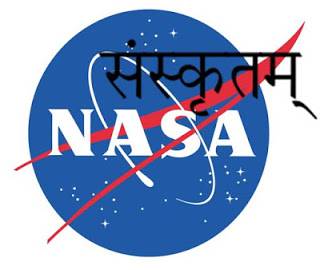 There is a report by a NASA scientist that America is creating 6th and 7th generation super computers based on Samskrit language. Project deadline is 2025 for 6th generation and 2034 for 7th generation computer. After this there will be a revolution all over the world to learn Sanskrit. (Shanti Yadav)
There is a report by a NASA scientist that America is creating 6th and 7th generation super computers based on Samskrit language. Project deadline is 2025 for 6th generation and 2034 for 7th generation computer. After this there will be a revolution all over the world to learn Sanskrit. (Shanti Yadav)
St. James Independent Schools of London has for more than three decades made Sanskrit as an integral part of their syllabus – indeed a compulsory subject for junior pupils – citing the benefits of the language for children’s development. The school has a mixture of Indian and English students, and is a Christian establishment; its interest in Sanskrit derives from the language’s intrinsic merit as a ‘perfected language’ (as the term ‘samskrita’ of course denotes) rather than any religious agenda.
Benefits of Learning Sanskrit
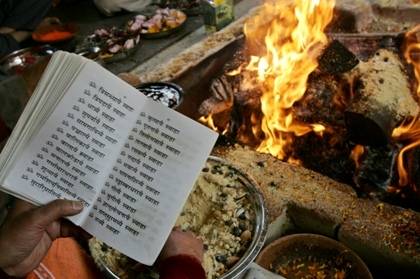 Learning of Sanskrit improves brain functioning. Students start getting better marks in other subjects like Mathematics, Science etc., which some people find difficult. It enhances the memory power. Our ancient rishis have analyzed the various chakras (energy centers) in the human body and are identifies with Sanskrit alphabets. Reading, reciting and chanting of the Sanskrit words will stimulates these points and raises the energy levels, whereby resistance against illnesses, relaxation to mind and reduction of stress are achieved.
Learning of Sanskrit improves brain functioning. Students start getting better marks in other subjects like Mathematics, Science etc., which some people find difficult. It enhances the memory power. Our ancient rishis have analyzed the various chakras (energy centers) in the human body and are identifies with Sanskrit alphabets. Reading, reciting and chanting of the Sanskrit words will stimulates these points and raises the energy levels, whereby resistance against illnesses, relaxation to mind and reduction of stress are achieved.
Sanskrit is the only language that uses all nerves of the tongue. By its pronunciation energy points in the body are activated that causes the blood circulation to improve. This, coupled with the enhanced brain functioning and higher energy levels, ensures better health. Blood Pressure, diabetes, cholesterol etc. are controlled. (American Hindu University).
Research has shown that the phonetics of this language has roots in various energy points and chakras of the body and reading, speaking or reciting Sanskrit stimulates these points and raises the energy levels, whereby resistance against illnesses, relaxation to mind and reduction of stress are achieved.
There are reports that Russians, Germans and Americans are actively doing research on our sacred books and are producing them back to the world in their name. Seventeen countries around the world have a University or two to study Sanskrit to gain technological advantages.
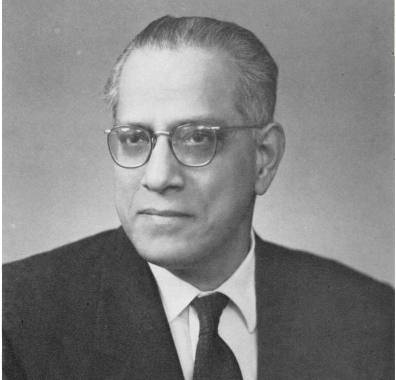 T. R. Seshadri in his book ‘The Curative Powers OF the Holy Gita’ reveals that most of the modern day diseases are psychosomatic – caused by mind. Emotional disturbances like hatred, anger and fear destroy not only our peace of mind but our health as well. They are often caused by the over-or-under secretion of the endocrine glands which secrete chemical hormones into the blood stream, which affects body functions like growth, digestion and energy levels, etc.
T. R. Seshadri in his book ‘The Curative Powers OF the Holy Gita’ reveals that most of the modern day diseases are psychosomatic – caused by mind. Emotional disturbances like hatred, anger and fear destroy not only our peace of mind but our health as well. They are often caused by the over-or-under secretion of the endocrine glands which secrete chemical hormones into the blood stream, which affects body functions like growth, digestion and energy levels, etc.
The author identified about 30 shlokas which have curative powers. It also mentions the method in which the shlokas have to be recited. To quote from the book “…advocate reciting/chanting the specific Mantras three times, once in the morning and once in the evening, and towards the close of Yogic practice….” The shlokas are to be chanted in Sanskrit.
For example, that by chanting 2:56 sloka in Bhagavad Gita, one may get relief from blood pressure (hypertension, hypotension), depression, impotency, neurosis, sexual disorders, stress, syphilis and venereal infections. Sloka 2:61 would have impact on AIDS, alcohol and drug addiction, blood pressure, brain disorders, depression, mental disorders, mind control, neurosis, psychic and psychosomatic illness, sexual disorders, stress, stroke and tension. Similarly, by chanting sloka 9:18, one may get some help during child birth, conception, delivery, gynecological disorders, menstrual problems and pregnancy.
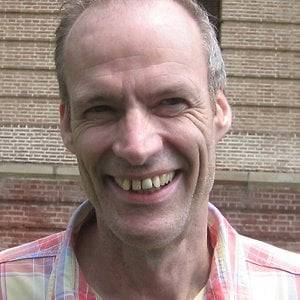 Rutger Kortenhorst, a Sanskrit teacher in John Scottus School in Dublin, Ireland, invited the parents of the children who enrolled in Sanskrit class and spoke to them about the value of teaching Sanskrit based on his own experience with the language. He is confident that the children will be fortunate to have taken this extraordinary language as a part of their curriculum. He said, “Sanskrit can help your child to express universal, harmonious and simple truths better. As a result, you will really have done your duty as a parent and the world will reap the benefits in a more humane, harmonious and united society. Sanskrit can do this as it is the only language that is based in knowledge all the way. Nothing is left to chance.”
Rutger Kortenhorst, a Sanskrit teacher in John Scottus School in Dublin, Ireland, invited the parents of the children who enrolled in Sanskrit class and spoke to them about the value of teaching Sanskrit based on his own experience with the language. He is confident that the children will be fortunate to have taken this extraordinary language as a part of their curriculum. He said, “Sanskrit can help your child to express universal, harmonious and simple truths better. As a result, you will really have done your duty as a parent and the world will reap the benefits in a more humane, harmonious and united society. Sanskrit can do this as it is the only language that is based in knowledge all the way. Nothing is left to chance.”
DONATIONS
As many of you know that SaveTemple Office was opened in June 2012 in Hyderabad. Office is located in Khairatabad. Four full time employees are working on the update of our website, Aalayavani Web Radio, Aalayavani magazine, conducting various activities to preserve and protect Hindu Temples and Culture. Our budget is approximately 2 lakh rupees per month. We request your generous donation to conduct activities to promote unity among Hindus and restore the glory of Hinduism.
Please DONATE. Your donations are appreciated to continue the work.
NOTE: GHHF is exempt from federal income tax under section 501 (c) 3 of the Internal Revenue code. Our tax ID # 41-2258630
Donate at: https://www.savetemples.org (click ‘Donate’ button on right side).
Where to send your DONATIONS?
Global Hindu Heritage Foundation
14726 Harmony Lane, Frisco, TX 75035.
Your donations are tax deductible. Our Tax ID: # 41-2258630
Any questions, call: Prakasarao Velagapudi
Please subscribe to Save Temples Telegram channel at https://t.me/savetemples
GHHF Board of Directors:
Prakasarao Velagapudi PhD, ( cell), ( home); (; ); Satya Dosapati (); (); (); Vinay Boppana (248-842-6964); (); (); (); (); (); (); (); (); Murali Alloju MD (703-953-1122); Veeraiah Choudary Perni MD (330-646-8004); Vishnu Kalidindi MD; Srivas Chebrolu MD; Avadesh Agarwal; Sudheer Gurram MD; Rajendrarao Gavini MD; Srinath Vattam MD, Ravi Gandhi, Ramadevi Vadali, Kishore Kancharla, Ranjith Kumar Rikkala; Satish Kodeboyina; and Dr. Ghazal Srinivas, Honorary Brand Ambassador.
GHHF Dallas Core Group
(); Srinivas Pamidimukkala (); (); (); (); (); (}; (); (); (); (); (); (); (); (); (); (); Sitaram Panchagnula (714-322-3430); Vasanth Suri (408-239-3436); Phani Aduri (214-774-2139); Konda Srikanth (214-500-5890); Siva Agnoor (214-542-661).



















